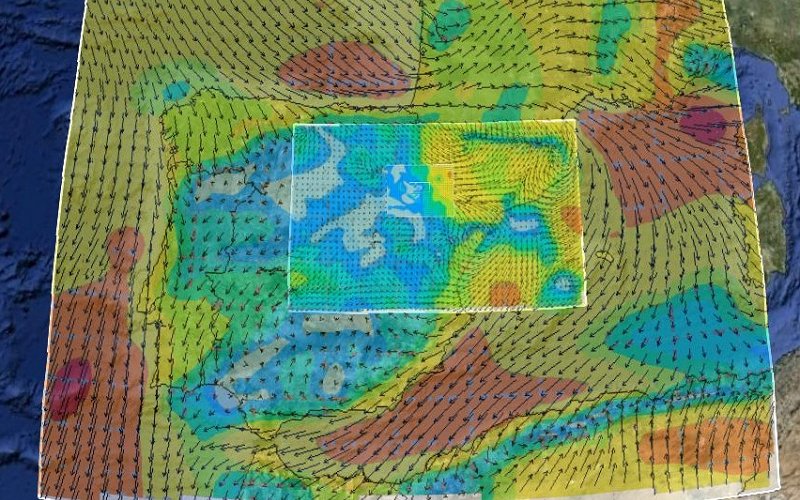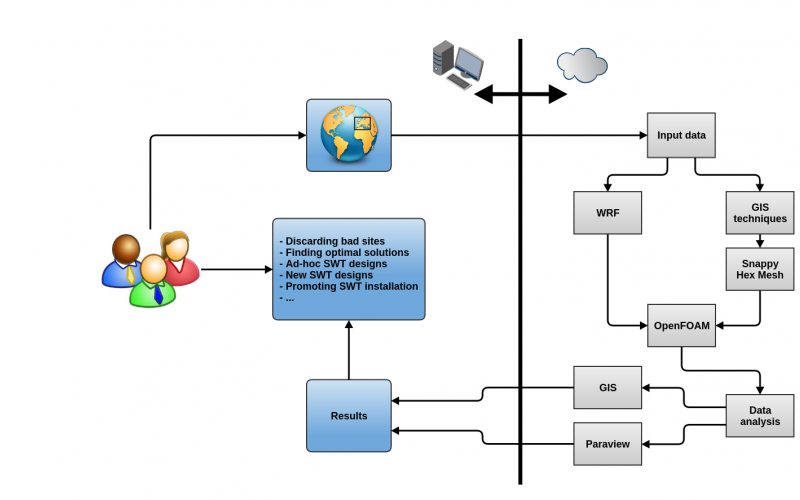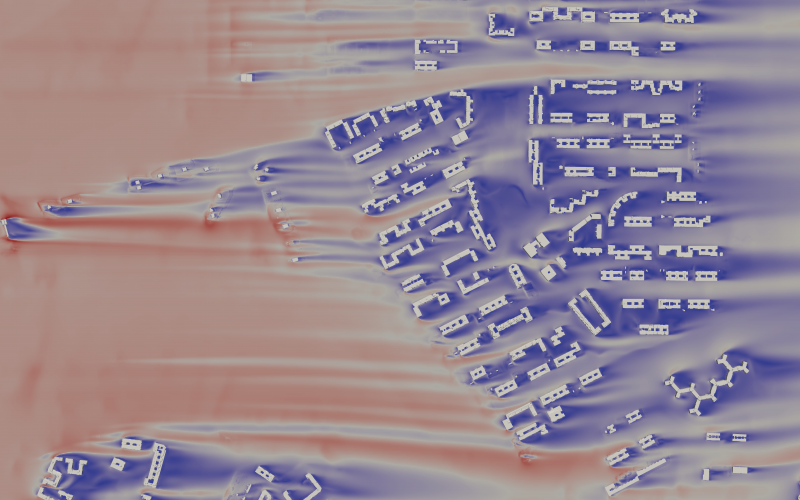Cloud-based micrositing of small wind turbines



Intricate urban geometries can generate complex wind patterns that are difficult to predict. Wind assessment tools are expensive in relation to the cost of a small wind turbine project. Additionally, wind resource maps are inappropriate for urban areas. For this reason, there is a strong demand by the wind industry sector for cheaper and accessible wind assessment tools for urban environments. Kliux Energies is a Spanish SME which specialises in the manufacturing and marketing of vertical-axis wind turbines. Its patented turbines require minimal maintenance, make virtually no noise, are bird friendly and have a visual impact which is aesthetically pleasing. For these reasons, these turbines are especially suitable for residential and urban environments: buildings, private homes, cottage accommodation, hotels, walkways, squares and parks. In this experiment, a Cloud-based, HPC tool is proposed that can provide detailed, high-quality local wind flow fields in urban environments for manufacturers and suppliers of small wind turbines (SWT). This tool will combine two flow simulation technologies on different scales, GIS techniques and data analysis methods to characterize urban wind with a level of fidelity and detail that would be unattainable to SMEs without recourse to on-demand, cloud computing. This application will provide valuable information to SWT manufacturers such as Kliux and will be easily deployed by a non-expert user. The University of Zaragoza is a Spanish public research institute that hosts its own computing centre, and provided application expertise. nablaDot is a Spanish company providing CFD consultancy services. Gompute is a leading Swedish simulation and HPC solution provider. It provided the HPC expertise in this experiment.
The Challenge
Wind flow over urban areas is very difficult to characterize. This is due to a number of factors, such as high turbulence and other strong effects created by complex urban geography. When placing wind turbines, it is critical that the exact flow pattern of the area is well understood.
Current urban wind assessment tools are costly in relation to the cost of a small wind turbine. It can take up to a year and cost €12,000 to carry out the necessary measurements, which can easily double the cost of placing a single turbine.
The Solution
In this experiment, a tool was developed which could integrate all of the necessary factors required to calculate the optimal placement of turbines. This tool includes GIS (Geographic Information System), NWP (Numerical Weather Prediction), CFD (Computational Fluid Dynamics) and analytics software to accurately simulate the urban environment. Due to the complexity of the calculation, HPC is the most suitable solution. A cloud-based solution made the most sense, as this would be the most cost-effective way of accessing HPC resources.
With the tool developed in this experiment, an urban area of approximately 2 km2 can be modelled with a cost of around €1,500 – €2,000, requiring approximately 15 days of computing calculation – a significant saving.
Business Impact
The main output of this experiment is the tool developed for the evaluation of turbine placement in urban environments. Although currently the tool still requires some manual intervention, the goal is to eventually offer it as an online pay-per-use service. Until then, nablaDot will offer it as a consultancy-based service.
Estimating the average wind speed, wind direction, air density and wind hours available at every site is crucial for KLiUX to be able to determine which wind turbine size model is most appropriate for each installation site. This tool will significantly increase KLiUX’s ability to compete.
nablaDot plan to use the technology developed in this experiment commercially (initially as a consultancy, moving to SaaS later) with an expected increase in turnover of €150,000 annually in the medium term, and the creation of two new jobs. In the long term, the number of users is expected to increase, allowing for an extra €300,000 in turnover and the creation of three more highly skilled jobs.
This experiment has allowed UNIZAR-BIFI to experience working with multi-workflow solutions. This experience will be extremely useful as it looks to work with other clients which may have complex computational needs.
Benefits
- This tool is expected to provide a yearly saving of €80,000 to €120,000 for the end user, KLiUX
- KLiUX will use the savings to create new jobs and expand its business, both within Europe and worldwide
- Additional sales of its products are expected to increase revenues by 20% to 40%.
- nablaDot expect increase in turnover of €150,000 annually in the medium term, increasing to twice this in the longer term.
Organizations involved
End User: KLiUX Energies
HPC Expert: The University of Zaragoza
Host Centre: nablaDot
HPC Provider: Gompute
